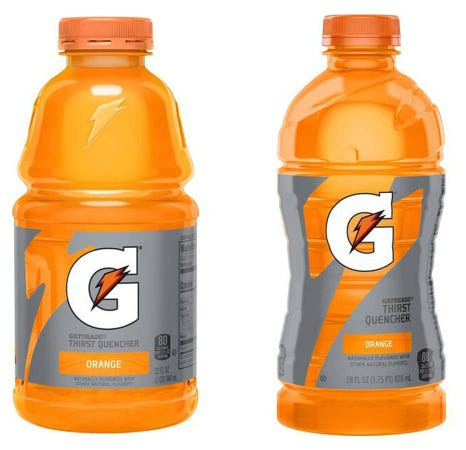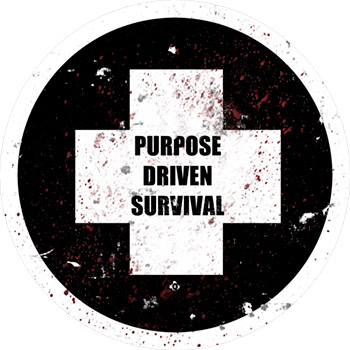
There’s a modification taking place in grocery stores– one that’s going mostly unnoticed, in spite of the truth that it’s becoming a new standard.
Product packaging for items, especially foods items, is getting downsized. Folger’s coffee, Chobani Yoghurt, Fritos, etc– all are being offered in smaller packages than in the past.
The resizing is not dramatic; in fact, it’s so small– in some cases less than 10%– that it’s hard to envision why they’re bothering to do it.
This is especially true of products that come in plastic product packaging. Gatorade, for instance, has been reduced in size from 32 to 28 ounces, but the rate is the exact same.
To the consumer, a modification in the size of a plastic Gatorade bottle does not raise an eyebrow, but for food manufacturers, it’s a considerable event. Each time a brand-new bottle is designed, even if the modification is extremely slight, new moulds need to be created and machined. And every machine in every factory across the nation that produces the bottles must be fitted with brand-new moulds. Then, the injection-moulding machine should be re-calibrated to place a smaller amount of polyethylene into the mould, and the moulding time should be re-calibrated.
Injection moulding machines are notoriously unstable, and it can take weeks or months to tweak them to perform consistently in continual production. Extremely expensive.
While this info is boring for the majority of us, it’s of fantastic significance to the manufacturer of the product.
Resizing packaging is a last resort for any producer of products. A simple downsizing is expensive enough that he would not captivate the idea unless he’s backed into a corner and can’t do anything else. If an entire market is scaling down items, it means something more worrying than just a few business trying to stay competitive.
And, in reality, an author for Consumer World commented just recently that cost increases and smaller sized product packaging “comes in waves,” but that “We happen to be in a tidal bore at the minute.”
However, again, all this is small potatoes to the consumer– it’s not his issue. So why should we trouble to consider the minutiae of food production when we have bigger concerns to issue us?
Well, in actual reality, there’s no problem that’s of greater value to us than the supply of food. Until just recently, we have actually had the ability to be relatively contented about food schedule, as the majority of us have actually been accustomed to the shelves at the supermarket staying complete. But, recently, there have been a few scares. Some items have actually gone missing for several months. Certainly, the lack of child formula was essential adequate to have appeared on the night news for numerous weeks.
However what if all food were, without warning, in brief supply? What if a portion of the grocery stores began shutting their doors throughout the nation?
Let’s back up a bit here.
In decades past, it was the standard for a lot of significant supermarkets to have their own warehouses, where backup stock might be saved. If, for any reason, shipments were delayed by, say, a snowstorm, the racks could be restocked in your area till the weather improved.
In addition, payment terms of thirty days net were not unusual in the market.
Markups, too, were considerable enough that items that were marked up 10%, 20%, or more could cover for those products that might not be marked up as much but were needed as a draw to get clients through the door. A store owner may decide, “Put 5% on the milk, and we’ll get the shortfall back on the Häagen— Dazs.”
However, over the last years or more, the food market has taken repetitive economic hits. In each case, the industry has attempted to give the impression that there were no problems– that it has actually been business as normal. However, reality be told, the viability of the industry as a whole has broken down considerably.
The food industry has, for several years, managed on a retail markup as low as 2% on a lot of products. Likewise, providers are requiring three-day payment turn-arounds in order to get by. In addition, the regional storage facilities that many supermarkets once kept are largely gone. Grocery stores now rely on semi-weekly shipments from wholesalers to keep the racks complete. There’s very little backup supply.
What all this implies is that the food market, from the producers to the wholesalers, to the merchants, has no wiggle space left. At this point, the industry looks like a boxer who has actually quit and dropped his hands and is just awaiting the knockout punch.
It will come as no surprise to the reader that inflation is increasing due to dramatic government spending. In the last 10 years, more currency has actually been created than in the previous 230 years created. Significant inflation is inescapable.
If considerable inflation were to take place in any offered month, food industry profits would be removed for the month. This now happens regularly in the market, however it’s recoverable the following month. (The next delivery is marked up enough to cover inflation, and while the earnings for the month in question is never ever recuperated, the market survives.)
However, if a simple three consecutive months of significant inflation were to take place, we might anticipate to see the lights going off in grocery stores throughout the nation. Those that are the most heavily in financial obligation would go initially. They ‘d be followed in the following months by others for as long as the inflation pattern continued.
If any country were to lose suppliers and sellers in, say, shoes or washing makers, shortages would occur, and we would simply change. Our old shoes would go to the cobbler instead of being thrown out. We ‘d call the washing machine repairman if we couldn’t go to the device store and purchase a new one.
But food is different. It’s the one item that should be changed right away. We can not merely postpone our requirement for food for a period of weeks or months.
A decade earlier, when I composed that food scarcities would take place in the coming economic crisis, unsurprisingly, few people took the idea seriously, as the caution had actually been made so early. But those shortages have now started. They’re not yet major, however we’re now seeing the warning signs.
At that time, I furthermore predicted that the shortages would end up being serious enough that food riots would take place and, even worse, that starvation would take place for the very first time in living memory in the First World.
If there’s a shortage of shoes or washing devices– let’s state 10% or perhaps 20%– we ‘d simply adjust. However if there’s a 10% or 20% lack of food, it means that some merchants have actually folded and that a given area no longer gets food.
If producers, wholesalers, and merchants shut their doors in higher numbers, there is famine. It will be selective– that is– it will be greater in some areas than others.
And, obviously, that’s a tough idea for us to wrap our heads around in an economy that until now permitted us to simply pop around to Burger King if we got a bit peckish.
So, the downsizing of a Gatorade bottle does not suggest that tomorrow, we’ll lack food. This is a simple symptom of a higher issue. However it’s a warning sign that we need to be paying closer attention to an industry that has lacked wiggle room and might soon end up being unsustainable.
If and when that happens, the outcome will be much more crucial than any of the other financial issues that we currently concentrate on.
Editor’s Note: It’s clear the Fed’s cash printing will go into overdrive. The next round of cash printing is likely to bring the scenario to a snapping point.
That implies we’re on the cusp of a worldwide recession that might eclipse anything we have actually seen before. Many people won’t be prepared for what’s coming …
That’s specifically why bestselling author and famous speculator Doug Casey and his group simply released this urgent PDF report on how to endure and flourish in this disorderly environment. Click on this link to download it now.

